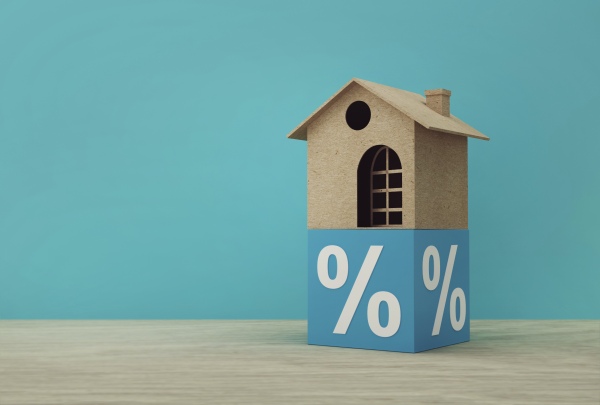
Setting the right rental price for your buy-to-let plays an important role in both finding and retaining tenants and maximising your investment’s profitability.
Figuring out the optimum amount of rent to charge isn’t always easy, though. You’ll need to consider many different factors and conduct extensive market research to ensure that your price is fair and competitive.
In this article, we’ll explain everything you need to consider and do when calculating the right price to charge tenants, revealing helpful tips and tools along the way to help you arrive at a well-informed price.
What is the Average Price of Rent in the UK?
According to the HomeLet Rental Index, the average rent price in the UK stood at £1,261/month as of August 2023. However, this price should be taken with a pinch of salt, as it’s important to note that the figure is probably skewed by the much higher rents that can be achieved in areas like London. Excluding London, this average price falls to £1,051/month.
It’s also important to note that rent prices are not uniform across the UK, and prices tend to be much higher in the south than in the north. However, the price of rent is on the up across the whole country, with every region experiencing an increase in the price of rent over the last year. In fact, average rental prices across the country have increased by 10.3% over the last year, suggesting that the rental market is robust.
The Importance of Getting the Rental Price Right
Determining the right amount of rent to charge tenants can be a balancing act. While setting a high rental price to maximise profits is tempting, charging too much can be counterproductive and may even violate the law. On the flip side, undervaluing your property comes with its own set of challenges. Let’s find out more.
Rental Price Legal Obligations
Did you know it’s against the law to overcharge tenants for rent? Under the Rent Act 1977, landlords are restricted from charging more than what is considered ‘fair rent’ for a property. Tenants also have a legal right to challenge any rent that they feel is excessive. The law also limits the frequency and amount landlords can increase a property’s rent by. Non-compliance with these laws could result in legal disputes and tarnish your reputation as a landlord.
The Consequences of Charging too Little Rent
Setting your rent too low has its obvious disadvantages, including:
- Reduced profitability.
- Hindering your ability to expand your rental portfolio.
The Risks of Overpricing Rent
So, surely it’s better to charge a little over the odds than under? Wrong. Pricing your rental property too high can also have detrimental effects, including:
- Reduced appeal, leading to less interest.
- Extended (and costly) void periods.
- Low tenant retention rates.
Finding and onboarding new tenants can become expensive and time-consuming if your tenants keep leaving for more competitively priced rental properties. Usually, it is more cost-effective to retain good, reliable tenants.
Key Considerations When Calculating the Optimal Rental Price
So, now we know the importance of charging the right amount of rent, but how do we determine what that is? The trick lies in striking the perfect balance, not too high or too low. You want your price to reflect the true value of the property whilst remaining competitive in the market.
To establish the optimal rental price to charge your tenants, conducting a thorough analysis of several key factors is essential. In this section, we’ll explore what factors you should consider when deciding on a fair and competitive rental price for your property.
Property Value
How much is your property worth? Your property’s worth sets the baseline for the rent you can reasonably charge. Factors like size, property type, location, and condition are crucial in this valuation. You can get an instant online valuation estimate with websites like OnTheMarket.com.
Location
Where in the country is your property located? The region that your property is in will heavily influence its rental price. Higher rent is expected in areas like London and the South East. However, even in less expensive regions, you should be able to charge more for properties located in highly sought-after neighbourhoods.
Property Condition
Is the property in good condition, or does it look old and tired? The state of your property is a significant determinant of its rental value. A well-maintained property with modern features like a refurbished kitchen or bathroom can command a higher price. If your property has excellent curb appeal, fresh paintwork, or new flooring, it can also add to its attractiveness and, consequently, its rental price.
Demand
If demand outstrips supply in the area, you have more scope to charge at the higher end of the scale. However, in saturated markets that are moving slowly, you may need to set a more competitive price to avoid lengthy void periods.
Local Amenities and Transport Links
Your property’s proximity to essential amenities, like public transport links, schools, or nightlife, can influence its attractiveness to specific tenant demographics. For example, properties near good schools attract families, whilst those close to vibrant social scenes may be more appealing to young professionals. Properties in very close proximity to lots of amenities may be able to charge a higher price.
Features
Consider whether your property offers additional perks or features that may make it more appealing to tenants. Examples include energy efficiency, outdoor space, extra rooms like a conservatory, office or utility room, or a garage or off-road parking. Similarly, allowing tenants to keep pets can also be seen as a big perk. These additional features may allow you to charge tenants a more premium price.
Furnishing
Landlords can usually charge more if the property is furnished. However, it’s vital to think carefully about your target demographic and whether it’s appropriate to furnish the property, as many tenants prefer to bring their own furniture.
Target Tenant Demographics
Understanding your target audience can help you tailor your property to meet their specific needs. Whether you’re focusing on students, families, or young professionals, aligning your property with your target demographic could allow you to charge a premium price for rent.
Tip – Don’t neglect to do your research!
Before you set the price for rent, it’s very important to conduct thorough market research. Examine comparable properties in the area and learn more about how healthy the local rental market is. This research will equip you with the knowledge you need to set an optimal rental price and maximise your investment whilst remaining fair and competitive.
Rent Calculators
A rent calculator is a handy tool landlords use to determine the right amount of rent to charge for their buy-to-let.
These calculators, often freely available online, use algorithms or formulas to suggest a rent figure based on various factors, including property location, size, local market rates, amenities, and more.
While some rent calculators only ask for basic information, more advanced versions take a much broader spectrum of variables into account to achieve a more accurate estimate. However, their accuracy can vary, so they are best used as a starting point only.
The idea is that landlords can use these rent calculators to gain a data-driven ballpark figure of what a fair and competitive rental price might look like for their property. Tenants may also use these calculators to check whether the rent being charged on a property is reasonable.
Websites offering free rent calculators include:

Guidelines for Determining Rental Price
Aside from rent calculators, many landlords use general guidelines or ‘rules of thumb’ to help them determine a foundation figure. They can then adjust this figure according to their market research findings and by taking into account the key considerations for determining optimal rent that we outlined earlier in this article.
Let’s learn about some common guidelines and best practices that landlords can use to help them establish a fair and competitive rental price.
- Rent should typically range from 0.8% – 1.1% of the property’s purchase price.
- The UK’s average rental yield is 4.75%, with higher rental yields generally being easier to achieve in the north of the country. Calculating the potential rental yield for your proposed rental price and checking that it is comparable to that of similar properties in the area can help you confirm that your price is fair and will help you achieve your targeted return on investment.
- Tenants are generally advised to look for properties where rent equals 30% of their gross pay. Think about who your target demographic is and whether the rent you are charging is fair and reasonable.
Tips for Boosting Your Property’s Rental Value
If your buy-to-let isn’t yet achieving the return on investment you had hoped it would, you could implement one or more of our top five strategies for maximising your property’s rental value.
Renovate
Consider making value-adding improvements to your property, like adding an extension, creating an extra bedroom, renovating the bathroom or kitchen, improving its curb appeal, or adding off-road parking. For more ideas, read our blog – Boost your rental property’s value with these 11 smart renovations.
Allow Pets
Introducing a pet-friendly policy can be a strong selling point. Many people are willing to pay more for their ideal home if they can bring their furry friends with them.
Improve Energy Efficiency
Boost your property’s energy efficiency by upgrading an old boiler, installing modern windows and doors, improving the insulations, or adding a smart energy meter.
Add a Home Office
With so many more people now working from home for at least part of the working week, home office spaces have become highly sought after! Turn a disused space or box room into a home office and upgrade to super-fast internet to generate more interest in your property, particularly if you’re targeting professionals.
Tailor to a Specific Tenant Profile
Gear your property’s decor and features to a particular tenant profile. Think about what demographic would be most attracted to your property’s location and local amenities, and then tailor your property to this demographic’s preferences. The more closely the property matches their needs, the more willing they will be to pay more.
When determining how much rent to charge for your property, the most important thing to remember is that you’re aiming to strike a balance between maximising your return on investment and remaining fair and competitive. By carrying out market research, taking key considerations into account, and using helpful tools like rent calculators, you can make an informed decision about how much to charge and secure the long-term profitability of your investment.



